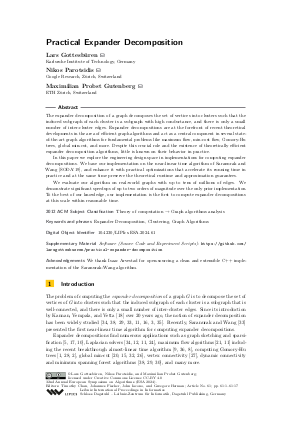LIPIcs.ESA.2024.61.pdf
- Filesize: 1.14 MB
- 17 pages

 Creative Commons Attribution 4.0 International license
Creative Commons Attribution 4.0 International license




































Feedback for Dagstuhl Publishing